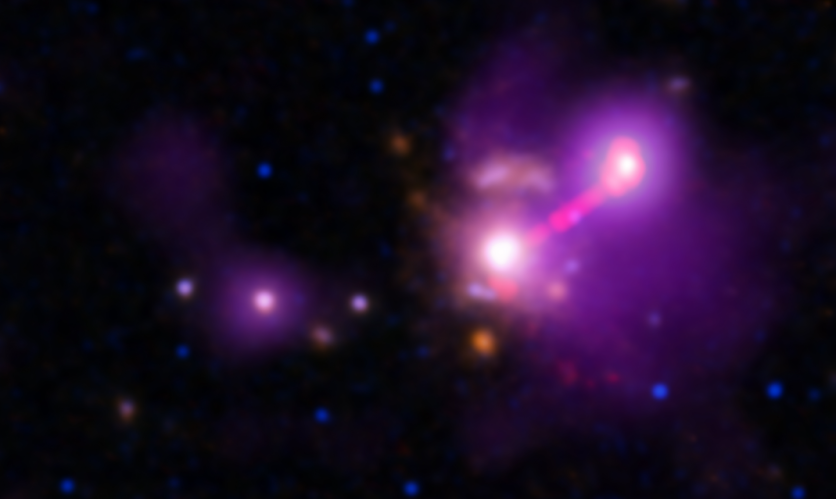A new study conducted with NASA's Chandra X-ray Observatory and the International Gemini Observatory has uncovered an unusual galaxy that appears to have assimilated all of its companion galaxies, rendering it extremely isolated.
The findings have important implications for the growth rates of galaxies in the early universe. The galaxy in question is situated around 9.2 billion light-years from Earth and contains a quasar, which is a supermassive black hole at the center of the galaxy that is drawing in gas and generating powerful jets of matter.

3C 297
The surrounding environment of this galaxy, called 3C 297, displays the main characteristics of a galaxy cluster, huge structures that are typically made up of hundreds or even thousands of galaxies. However, 3C 297 stands out by being on its own.
Valentina Missaglia, who is based at the University of Torino in Italy and led the research, stated that "It seems that we have a galaxy cluster that is missing almost all of its galaxies. We expected to see at least a dozen galaxies about the size of the Milky Way, yet we see only one."
Missaglia and her team identified two key indicators of a galaxy cluster in the Chandra X-ray data. Firstly, the X-ray data shows that the solitary galaxy is encircled by substantial quantities of gas that have temperatures of tens of millions of degrees, a feature usually associated with galaxy clusters.
The supermassive black hole in 3C 297 has created a strong source of X-rays about 140,000 light-years away, indicating that it has collided with gas surrounding the galaxy.
Additionally, one of the radio jets in the galaxy cluster is bent, suggesting that it has interacted with its environment.
However, despite these characteristics, Missaglia's team discovered that none of the 19 galaxies located close to 3C 297 in a Gemini optical image, and with precise distance measurements, were at the same distance as the solitary galaxy.
Co-author Juan Madrid of the University of Texas, Rio Grande Valley, speculated that the strong gravitational pull of the large galaxy combined with interactions between the galaxies was too much, causing them to merge with the large galaxy.
Fossil Group
As a result, the researchers believe that 3C 297 is no longer a galaxy cluster but a "fossil group," the final stage of a galaxy pulling in and merging with several other galaxies.
This fossil group is particularly noteworthy as it is located 9.2 billion light-years away, making it the furthest fossil group discovered to date. The previous record holders were at distances of 4.9 and 7.9 billion light-years.
Co-author Mischa Schirmer of the Max Planck Institute for Astronomy stated that creating the 3C 297 system only 4.6 billion years after the big bang may be difficult to explain. While this does not contradict cosmological ideas, it does push the boundaries on how rapidly galaxies and galaxy clusters could have formed.
Despite the possibility of dwarf galaxies surrounding 3C 297, the absence of larger galaxies like the Milky Way remains unexplained. M87 in the Virgo Cluster is an example of a nearby galaxy that has had large companions for billions of years, which makes 3C 297's solitary existence for billions of years unusual.
The findings of the team were published in The Astrophysical Journal.
Related Article : [LOOK] NASA James Webb Images Dazzle in New X-Ray Light from Chandra

ⓒ 2025 TECHTIMES.com All rights reserved. Do not reproduce without permission.




